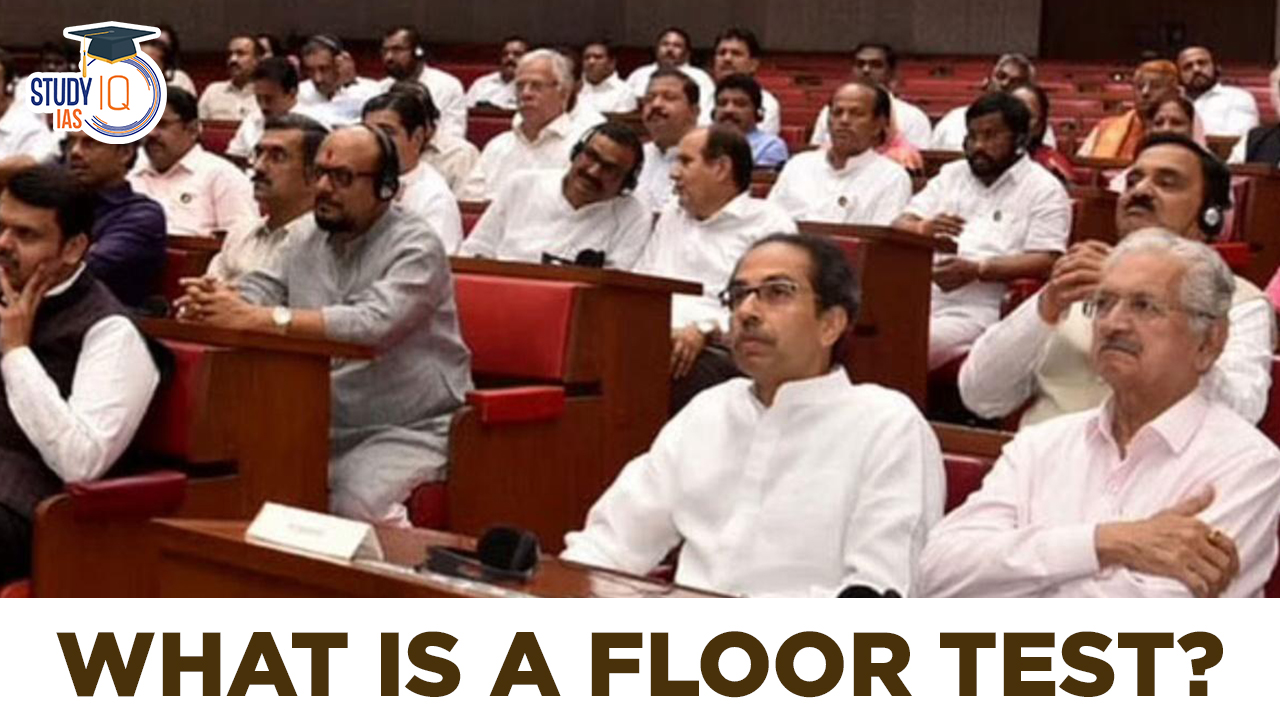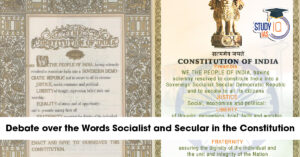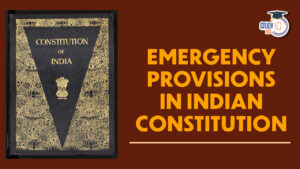Table of Contents
The recent confidence motion in the Bihar Legislative Assembly has garnered significant attention, marking a crucial moment in the political landscape of the state. The Janata Dal (United) coalition government, led by Chief Minister Nitish Kumar, emerged victorious in the confidence motion, underscoring the stability and legitimacy of the ruling alliance.
What is a Floor Test?
A floor test, also known as a trust vote, is a parliamentary procedure conducted in legislative bodies to determine whether the ruling government still retains the majority support of the house. It is typically initiated when there are doubts or questions regarding the government’s majority in the legislature. The purpose of a floor test is to ascertain the confidence of the house in the incumbent government.
During a floor test, the Chief Minister or Prime Minister, depending on the level of government, moves a motion seeking a vote of confidence. Members of the legislative assembly or parliament then cast their votes to express their support or lack thereof for the ruling government. If the majority of members vote in favor of the government, it retains power. However, if the government fails to secure a majority, it is required to resign, potentially leading to the formation of a new government or fresh elections.
Floor tests can be conducted through various voting mechanisms, including voice voting, electronic voting, or physical division of votes. The choice of method often depends on the rules and procedures of the specific legislative body conducting the test.
Overall, a floor test is a crucial democratic process aimed at ensuring the stability, legitimacy, and accountability of the government by reaffirming the confidence of the legislative assembly or parliament in the ruling administration.
We’re now on WhatsApp. Click to Join
Floor Test Overview
| Aspect | Description |
| Definition | A parliamentary procedure conducted in legislative bodies, also known as a trust vote, to determine if the ruling government maintains majority support. |
| Initiation | Triggered when doubts arise regarding the government’s majority in the legislature. |
| Purpose | To ascertain the confidence of the house in the incumbent government. |
| Motion | The Chief Minister or Prime Minister moves a motion seeking a vote of confidence. |
| Voting Process | Members of the legislative assembly or parliament cast their votes to express support or lack thereof for the ruling government. |
| Outcome | If majority support is secured, the government retains power. If not, it must resign, potentially leading to the formation of a new government or fresh elections. |
| Voting Mechanisms | Can be conducted through voice voting, electronic voting, or physical division of votes, depending on the rules and procedures of the specific legislative body. |
| Importance | Crucial democratic process ensuring stability, legitimacy, and accountability of the government by reaffirming confidence in the ruling administration. |
| Purpose of the Test | Ensures the stability, legitimacy, and accountability of the government by reaffirming the confidence of the legislative assembly or parliament in the ruling administration. |
| Key Participants | Chief Minister or Prime Minister, members of the legislative assembly or parliament. |
| Repercussions | Success allows the government to continue governing; failure may lead to resignation and potential political realignments or fresh elections. |
| Overall Significance | Essential democratic process upholding stability, legitimacy, and accountability by reaffirming confidence in the ruling administration. |
Bihar Floor Test
- The Bihar floor test was a pivotal event in the state’s political landscape.
- It aimed to determine the confidence of the legislative assembly in the ruling Janata Dal (United) coalition government.
- Members of the assembly cast votes to express support or lack thereof for Chief Minister Nitish Kumar’s administration.
- Success in the floor test would allow the government to retain power and continue governing the state.
- Failure to secure majority support could lead to the resignation of the government, potentially triggering political realignments or fresh elections.
- The outcome of the floor test carried significant implications for Bihar’s governance and political future.
Governor’s Power to Call for Floor Test
| Aspect | Description |
| Governor’s Role | The Governor, as the constitutional head of the state, possesses residual powers under Article 163, allowing them to call for a floor test when doubts arise regarding the government’s majority. |
| Residual Powers | These powers grant the Governor authority to intervene in matters not explicitly outlined in the constitution or legislative framework. |
| Circumstances | The Governor may exercise this authority when the House is not in session or when there is a prima facie view that the government has lost its majority. |
| Judicial Precedent | The Supreme Court, in cases such as Shivraj Singh Chouhan & Ors versus Speaker, Madhya Pradesh Legislative Assembly & Ors, upheld the Speaker’s authority to call for a floor test in similar circumstances. |
| Upholding Constitutional Integrity | The Governor’s power to call for a floor test ensures adherence to democratic principles, transparency, and accountability within the legislative framework. |
| Checks and Balances | Serves as a mechanism to prevent potential abuse of power by the ruling government and reaffirms the Governor’s role as a guardian of constitutional integrity. |
| Importance | Essential for maintaining the integrity and functioning of the democratic process, particularly in situations where doubts or disputes arise regarding the government’s majority. |
| Legal Framework | Governed by constitutional provisions and judicial interpretations, ensuring that the exercise of such powers is within the bounds of legal legitimacy and democratic norms. |
Constitutional provisions for Floor Test
The constitutional provisions governing floor tests in India primarily derive from Articles 75(3), 164(2), and 356 of the Constitution of India. Below are the key constitutional provisions related to floor tests:
- Article 75(3):
- This article pertains to the appointment and tenure of the Prime Minister.
- It states that the Prime Minister shall hold office during the pleasure of the President, and the President shall appoint other ministers to aid and advise him.
- In the context of a floor test, if the Prime Minister loses the confidence of the majority of the members in the Lok Sabha, as ascertained through a floor test, the Prime Minister is expected to resign from office.
- Article 164(2):
- This article deals with the appointment and tenure of Chief Ministers in states.
- It mandates that the Chief Minister shall hold office during the pleasure of the Governor and shall be appointed by the Governor.
- Similar to the provision for the Prime Minister, if the Chief Minister loses the confidence of the majority of the members in the state Legislative Assembly, as determined through a floor test, the Chief Minister is expected to resign.
- Article 356:
- This article, often referred to as President’s Rule or State Emergency, deals with the imposition of President’s Rule in states.
- It empowers the President to assume control of the state’s administration if the state government is unable to function in accordance with the provisions of the Constitution.
- Floor tests may be conducted in the context of Article 356 to ascertain whether a majority government can be formed, thus determining the necessity of President’s Rule.
These constitutional provisions provide the framework for conducting floor tests at both the national and state levels in India, ensuring democratic accountability and the stability of governments. Additionally, various judicial pronouncements and precedents have further clarified and interpreted these provisions in specific contexts related to floor tests.
Voting Methods for Floor Test
During a floor test, various voting methods can be employed to ascertain the confidence of the legislative body in the ruling government. These methods ensure transparency, accuracy, and accountability in the voting process. The primary types of floor tests and their corresponding voting methods include:
- Voice Vote:
- Description: Members verbally express their support or opposition to the motion by saying “Aye” (in favor) or “No” (against).
- Procedure: The Speaker or Chairperson of the house calls for the members to signify their support or opposition verbally.
- Advantages: Simple and efficient, requiring minimal time and resources.
- Disadvantages: Subject to manipulation or misinterpretation due to the lack of individual identification of votes.
- Electronic Voting:
- Description: Members cast their votes electronically using specialized voting machines or systems.
- Procedure: Each member is provided with a unique electronic device to input their vote, which is then electronically recorded and tallied.
- Advantages: Ensures anonymity and accuracy in vote counting, reducing the potential for human error or manipulation.
- Disadvantages: Requires initial setup and training for members, and the possibility of technical glitches.
- Physical Division of Votes:
- Description: Members physically move to designated sections of the legislative chamber to signify their support or opposition.
- Procedure: The Speaker or Chairperson divides the house into separate sections, with members indicating their vote by physically moving to the designated area.
- Advantages: Provides a clear visual representation of support or opposition, allowing for easy counting and verification.
- Disadvantages: Relatively time-consuming and may lead to logistical challenges, especially in large assemblies.
Types of Floor Tests
- Regular Floor Test:
- Conducted to determine the confidence of the legislative body in the ruling government.
- Involves the Chief Minister or Prime Minister moving a motion seeking a vote of confidence, with members voting using one of the aforementioned methods.
- Composite Floor Test:
- Conducted when multiple individuals stake a claim to form the government, and the majority is unclear.
- The Governor may call for a special session to determine the majority, with various voting methods used to ascertain support among competing claimants.
- No-Confidence Motion:
- A specific type of floor test initiated by the opposition to challenge the confidence in the ruling government.
- Members vote on a motion expressing lack of confidence in the government, typically resulting in the government’s resignation if the motion is passed.
Floor Test UPSC
A floor test is a parliamentary procedure used to determine whether the ruling government maintains the majority support of the legislative body. Initiated when doubts arise about the government’s majority, the Chief Minister or Prime Minister moves a motion seeking a vote of confidence. Members of the assembly or parliament then cast their votes through voice voting, electronic voting, or physical division. Success in securing a majority allows the government to retain power, while failure necessitates resignation, potentially leading to political realignments or fresh elections.


 Indian Secularism: Constitutional Provis...
Indian Secularism: Constitutional Provis...
 India Mediation Campaign, Objectives, Pr...
India Mediation Campaign, Objectives, Pr...
 Emergency Provisions in Indian Constitut...
Emergency Provisions in Indian Constitut...





















